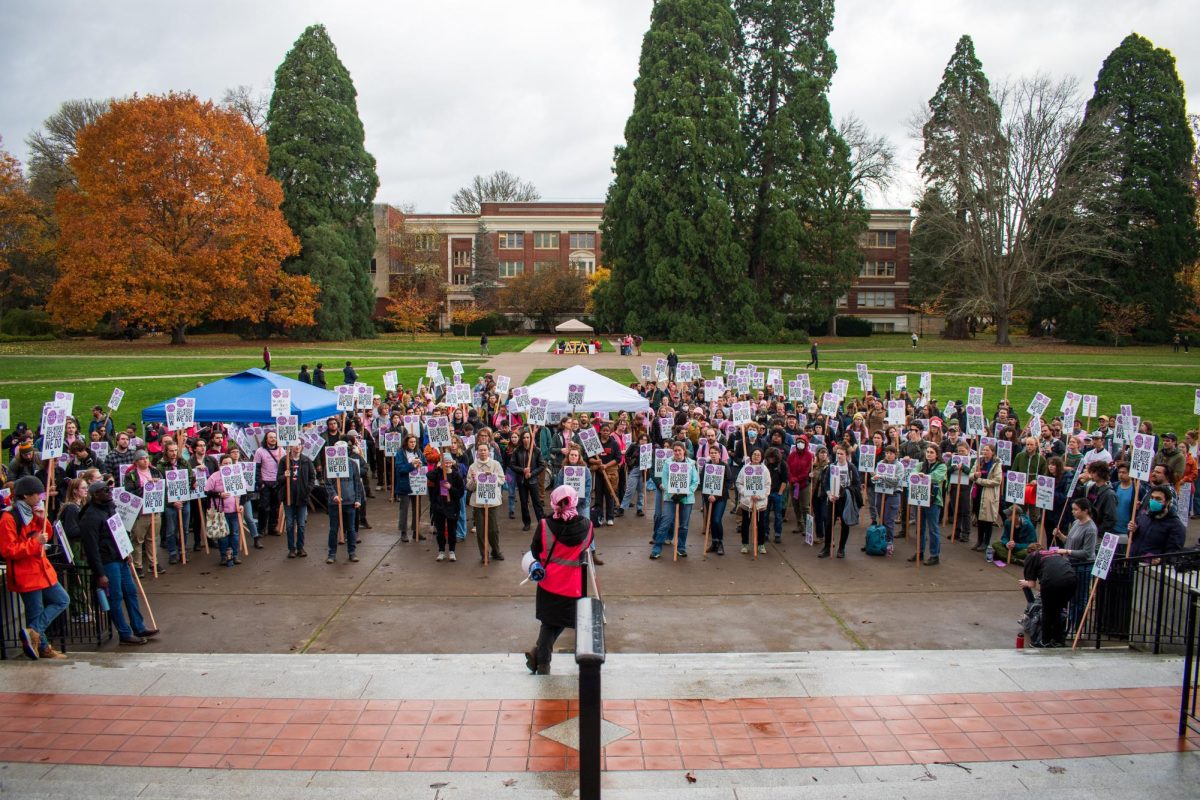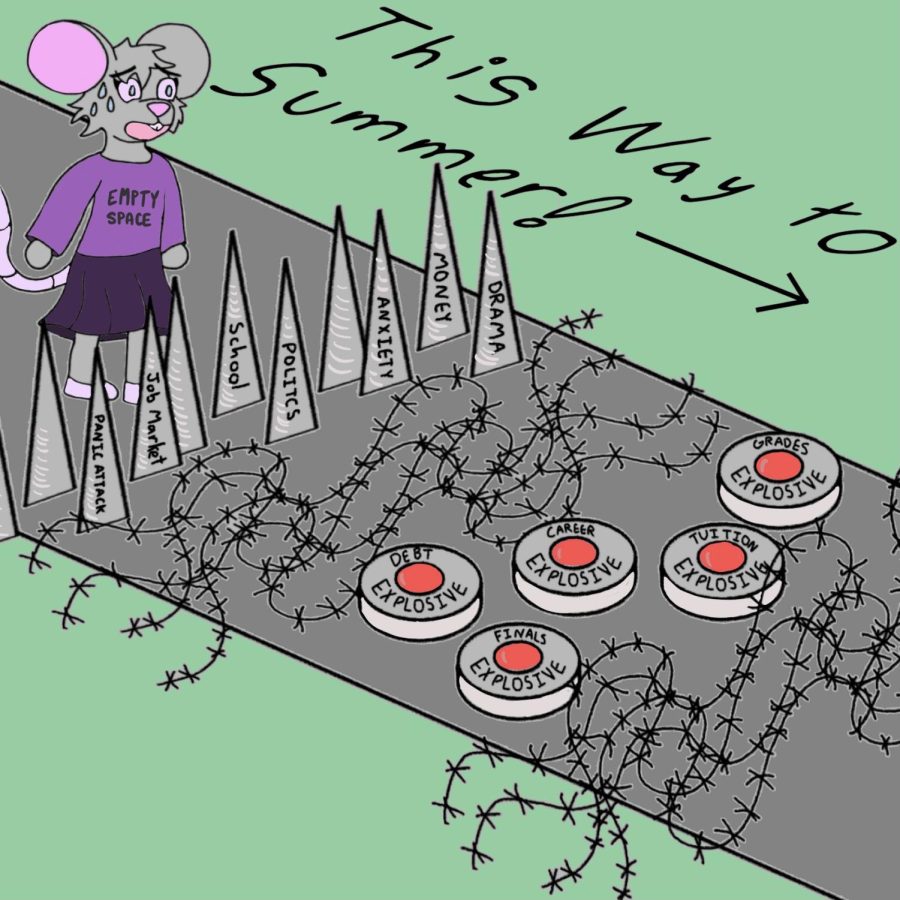Local affordable housing experts presented and answered audience questions about housing issues at the Corvallis-Benton County Public Library on April 9.
The City of Corvallis’ Housing and Neighborhood Services Division and the League of Women Voters of Corvallis hosted the presentation. The event’s presenters were Brigetta Olson, Corvallis Housing and Neighborhood Services Division Manager, Tim Lawler, Development Manager and Nora Cronin, Real Estate Development, DevNW.
The panel started off with a presentation from Olson, who works with affordable developers to navigate local permitting systems and financial incentives. She discussed the scope of the affordability of local housing challenges.
“39% of renters in Corvallis are rent burdened or severely rent burdened. That means that they’re paying more than 50% of their income towards housing, that’s rent, utilities, etc.,” Olsen said. “It makes it hard to be able to choose than pay for your rent, utilities and then having to pay for childcare and groceries and prescriptions, etc.”
“It’s hard for folks to pay and afford a place to call home.”
Olsen noted the role of former Corvallis regulations in limiting housing development and growth, creating the need to free up and build new housing across the entire housing continuum. The housing continuum ranges from housing for homeless individuals to one-bedroom apartments for seniors and houses for larger families.
“We do great work in partnership with a lot of affordable developers in our community,” Olsen said. “And in the past year, we’ve been able to open up, or these developers have been able to open up, 358 units of new affordable housing apartments.”
The presenters all discussed the various challenges for securing additional affordable housing in Corvallis, such as the availability of land, the high price of building housing, the lack of diversity of housing inventory, zoning, regulations, the difficulty of developing land, and the challenge of convincing developers to construct affordable housing.
Presenters also noted the importance of city planning efforts and financial incentives in solving local housing affordability issues and discussed various current and future affordable housing projects.
Providing housing to local homeless residents was a large focus of the presenters.
According to Olsen, the “Coordinated Homeless Response Office has developed a coordinated homeless response. The office has developed what’s called a flexible housing subsidy pool, and that tool is a financial resource so that they can help rapidly rehouse individuals who are formally houseless and so are on shelter.”
The program, she explained, combines financial incentives with case management, street outreach, and other support.
Cronin followed Olsen by discussing DevNW’s developments for the Benton County Flexible Housing Subsidy Pool. She also discussed permanent supportive housing developments addressing the housing needs of chronically homeless individuals in Oregon, including in northwest Corvallis.
According to Cronin, permanent supportive housing developments “provide long-term affordable housing combined with voluntary supportive services.”
“It typically serves people, individuals, and families experiencing or at risk of homelessness,” Cronin said. “Typically, permanent supportive housing has some sort of rental subsidy available to it, or residents that move in have a voucher that they may have, so that they’re only paying 30% of their income on rent.”
Presenters also reviewed Community Land Trust programs in Corvallis, in which a house’s land is purchased and held by a nonprofit, and then the home itself is sold to a homeowner.
“The property is restricted to 80% of the area median income and will be restricted on resale as well,” Cronin said.
“And that is the great thing about this program. Sometimes in the past, I have been involved in projects where it is affordable the first time, and then the market happens, and then it no longer becomes affordable on the second resale or the third.”
Lawter, who works with Greenlight Development on building affordable housing projects in Corvallis, likewise commented on the significance of CLT programs.
“These are families of four, almost making $90,000 a year, which is significant. You know, that’s a great salary, but are you going to be able to buy a house? But you can’t, really, you can’t buy a house in Corvallis on a $90,000 salary. So it’s really creating opportunities in all different areas.”
Audience members finished off the presentation by questioning panelists on federal funding changes, SLOs, mixed-use development, and the lowering of zoning parking requirements to free up space for more housing units.
While much of the evening’s discussion focused on the complex planning, regulatory, and economic logistics of making affordable housing in Corvallis a reality, the presenters emphasized that the heart of creating more affordable housing lies with people.
“We were talking about units, but really we’re talking about homes,” Olsen said. “And we know that home matters to everybody, and that you can’t have easy success in life if you don’t have a place to call home.”

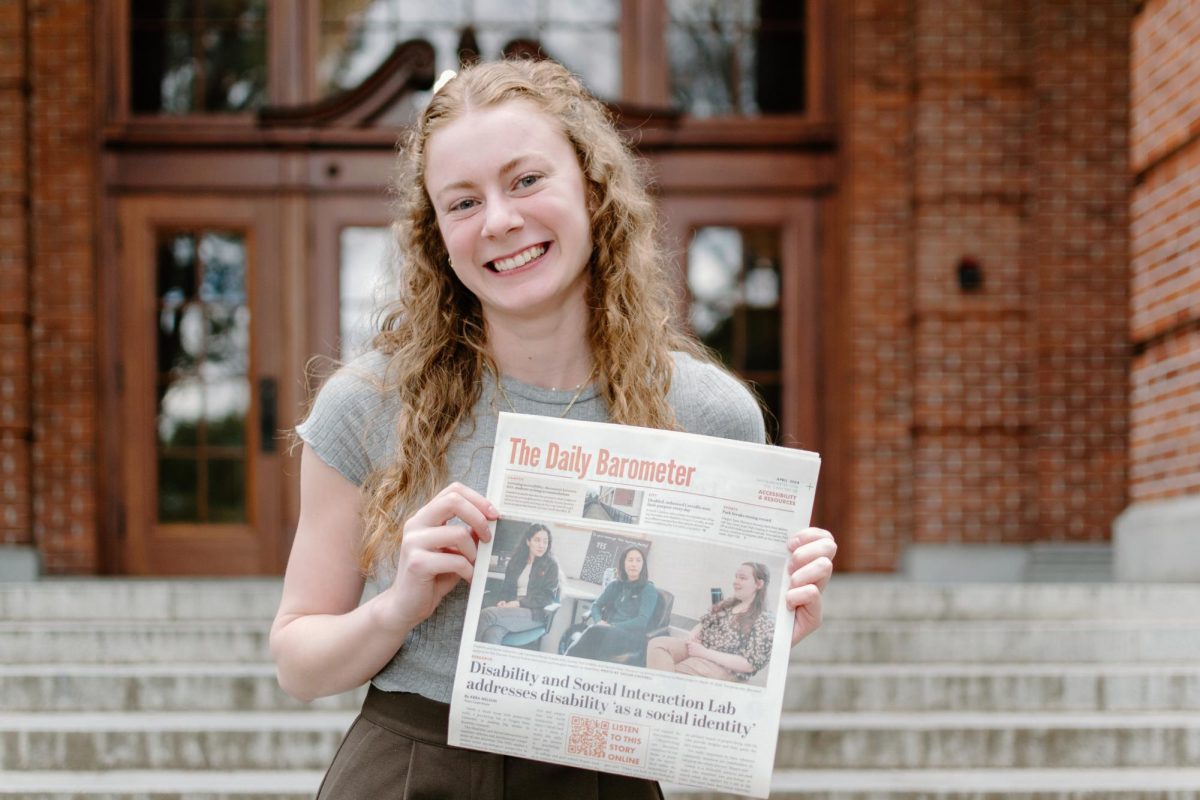

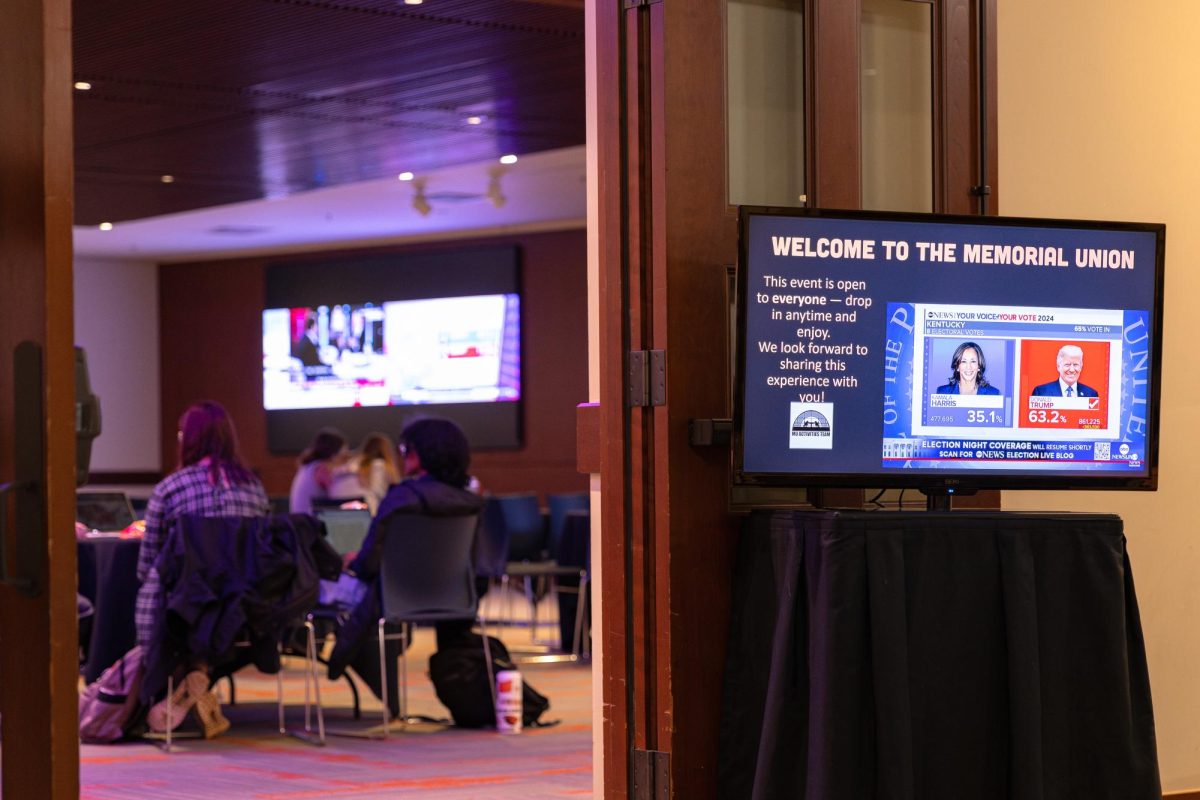












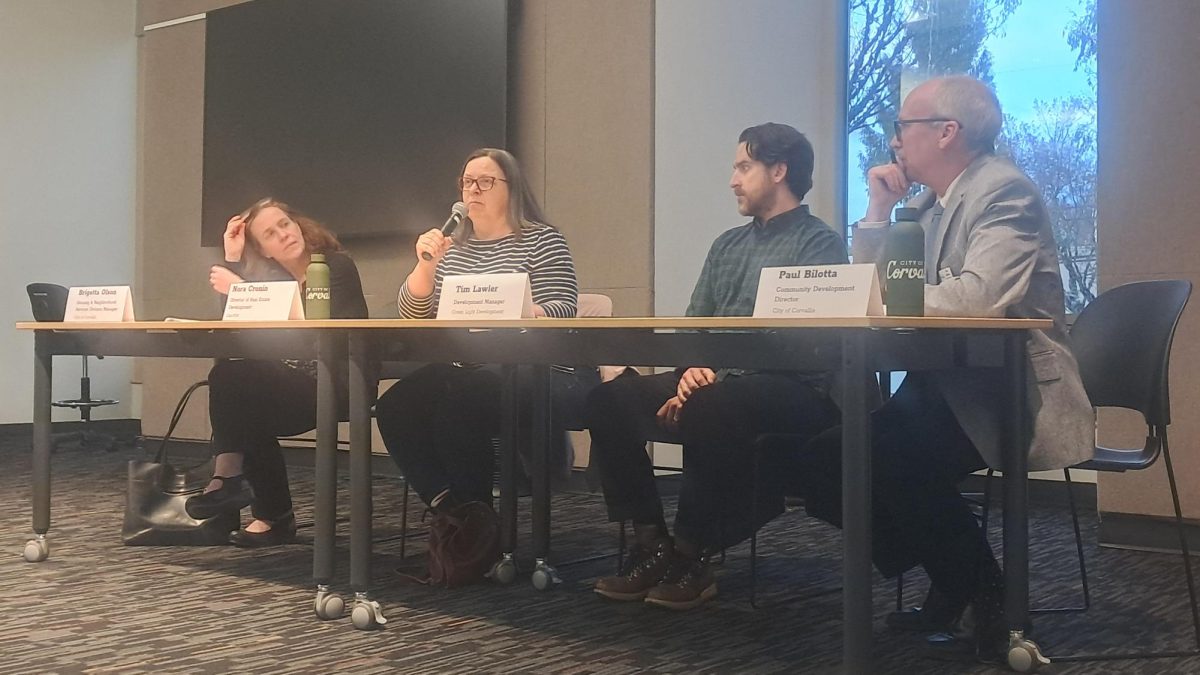





































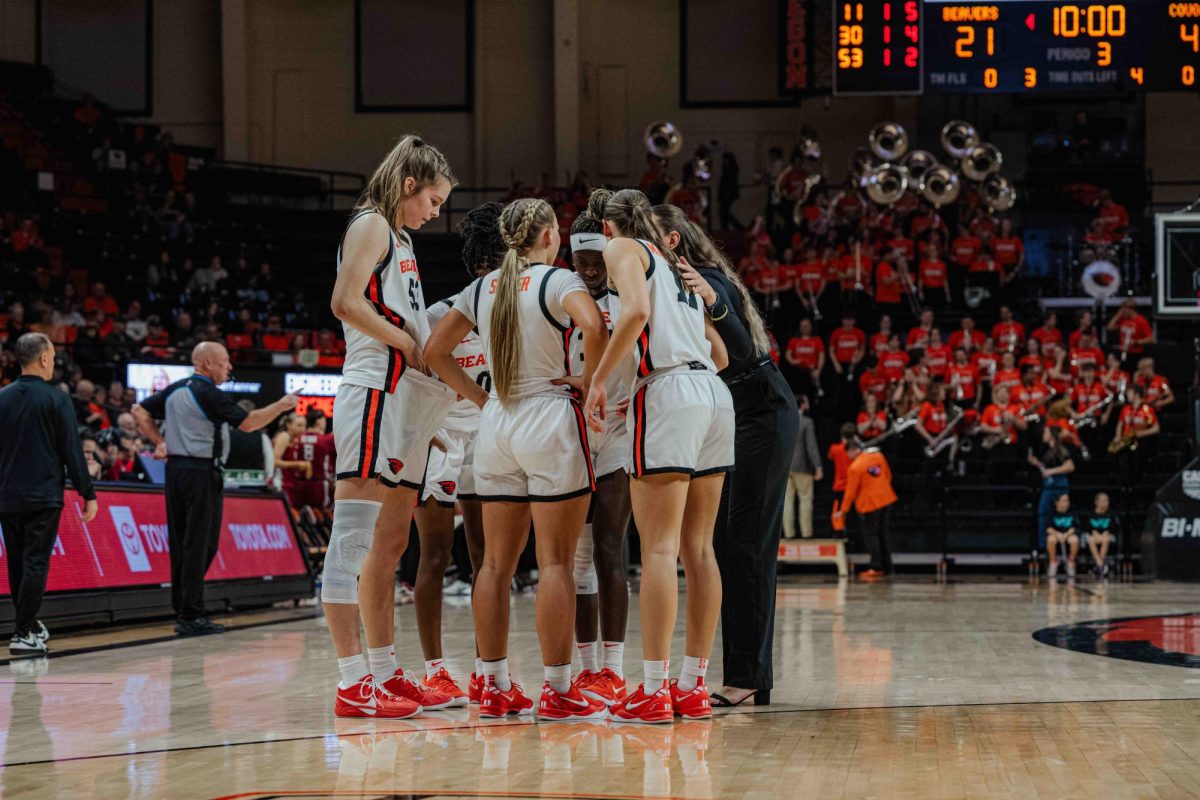





























![Newspaper clipping from February 25, 1970 in the Daily Barometer showing an article written by Bob Allen, past Barometer Editor. This article was written to spotlight both the student body’s lack of participation with student government at the time in conjunction with their class representatives response. [It’s important to note ASOSU was not structured identically to today’s standards, likely having a president on behalf of each class work together as one entity as opposed to one president representing all classes.]](https://dailybaro.orangemedianetwork.com/wp-content/uploads/2025/03/Screenshot-2025-03-12-1.00.42-PM-e1741811160853.png)








